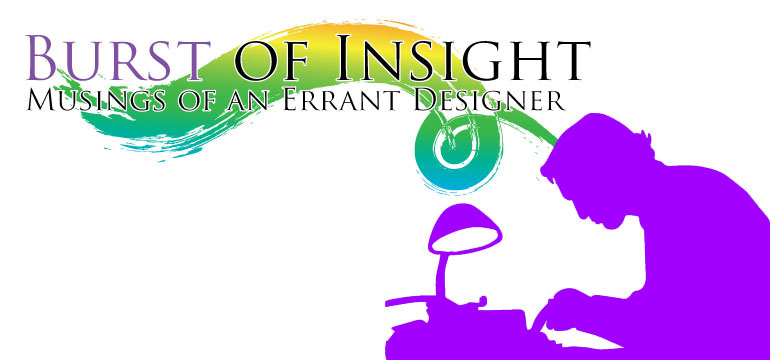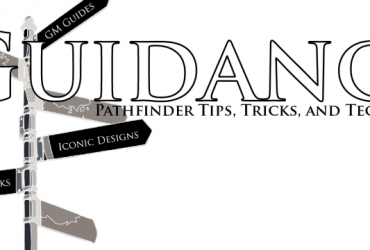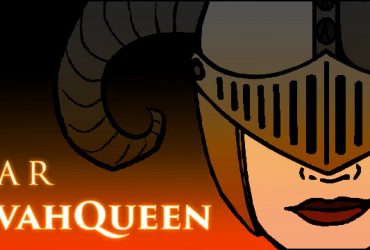I’ve been writing about the Maze for a few weeks now and thought I’d take a short break and talk about running a game that requires much less prep.
Guerilla Gaming
In the summer of 1983, I was introduced to the D&D Red Box and my world changed forever. We played D&D every day and often way into the night. We would play anywhere. My best friend’s living room, the backseat of one of our parent’s station wagons, the park, someone else’s front porch and sometimes we’d play nothing more than a single d20 we could sneak into a pocket, a pencil, some scrap paper, and our sketchy memories of the rules and monsters. I don’t miss those games exactly but there are times I long for the freedom of that style of play.
The Empty Table
Today I’m a published freelancer with a lot more experience under my belt than 10-year-old me but clearly, there is something I can go back and learn from my younger self and those reckless “we don’t need no stinking Rulebook” days.
Next time I run a one-off game, I’m going to empty the table. Literally. No rulebooks. No phones. No distractions. Just dice and a pencil for each player. I have some rolled paper I’ll tape down onto the table to give the players a place to take notes and record their characters. Yup, right on the play area. Gaming paper has grid rolls so I might tape down a section of that too.
We’ll keep the rules very simple and I’ll adapt something my players are familiar with. Currently, our go to games are Pathfinder and Numenera but we’ve also played a little FATE. These three systems are pretty easy to pick up but have varying degrees of complexity. And while Pathfinder is easily the most complex of the three, I think my players are most familiar with its dice conventions. So I’ll build off of Pathfinder’s most basic mechanic and borrow some concepts from the other games to smooth over the rough rules. (Plus, this is a Pathfinder blog, so I don’t think I’ll go breaking that rule.)
The Rough Rules
Character Creation
Rather than picking a race and class each player should provide a short single-sentence Description of their character. As long as the character is performing an action tied to that Description she gains a +2 to any skill or ability checks. This sentence might also convey a few other minor abilities such as darkvision or low-light depending on racial choices summarized in the description. A description sentence might read something like this: “Beale is a slight elven rogue with a sharp tongue and sharper daggers,” Or “Despite being brutish and menacing in appearance, the half-orc, Thade is actually a kind hearted ranger.” An exact formula isn’t required and could be replaced with a more familiar list, “NG Halfling Fighter.”
We’ll use the six standard Pathfinder Abilities but we’re going to skip scores and just place modifiers as follows: +3, +2, +1, 0, 0, -2.
Each character selects up to five Skills and must take two Inabilities. Skills grant the character a +2 to any checks involving them while Inabilities inflict a -2 penalty. Skills (and Inabilities) can be anything from the PF skill list, saving throws, initiative, base attack, or defense (in lieu of AC). Basically, skills encompass anything you can do that would require a roll. A character may take a skill a second time to increase it to a maximum of +4. Note: some magical spell effects are best expressed as skills in this system.
Each character gains a single Unique Exploit. Maybe you’re the wielder of a magic talking sword of living ice. Maybe you’re a rogue and your exploit is that you take no damage from traps and you can aid an ally within arm’s reach granting them the same benefit. Players and GMs should work out a special quality for each character. In a more modern setting maybe you’re an expert in two gun mojo and can inflict double damage when wielding two guns against the same target.
Every Player begins with 20 Hit Points and 3 Hero Points. I’ve got a mess of poker chips we’ll probably use for easy reference.
Hit Points are an abstract measure of your health and vitality. You regain 1d6 Hit Points after a full nights rest.
Hero Points an even more abstract measure of your character’s potential. Hero points can be spent before a roll is made to roll two d20s and the character can choose the best. If spent to add a reroll after a roll has been made the character must take the second roll even if it is worse than the initial roll. You gain Hero Points for acting heroically or for enduring hardship. The GM may offer a hero point to add an unexpected complication to a situation. If the player accepts they gain a Hero Point but must deal with the complication. If the player refuses they must spend a Hero Point of their own instead of gaining one.
Finally, each character needs some equipment. You may select up to two weapons and a suit of armor a reasonable explorer’s kit of gear appropriate to your description and 3d4 gold pieces. Some gear such as shields automatically grants a skill bonus of +2 automatically.
Weapons and Armor Statistics
Light Weapons get a +1 bonus to hit but only deal 1d6 damage. Examples of light weapons include darts (3), daggers (2), rapier, shortbow (20 arrows), short sword, small club and whip.
Medium Weapons get neither a bonus nor a penalty to hit and inflict 1d8 damage. Some medium ranged weapons require two hands. Examples of medium weapons include battleaxe, broadsword, club, crossbow (20 bolts), flail, longbow (20 arrows), mace, pistols M, and war hammer.
Heavy Weapons suffer a -1 penalty to hit and inflict 1d10 points of damage. Heavy weapons always require two hands to wield. Examples of heavy weapons include chainsaw M, great axe, greatsword heavy crossbow (20 bolts), heavy draw longbow (20 arrows), polearms, rifles M, and spiked chain.
Light Armor grants a +1 to defense skill checks and Damage Reduction (DR) 1. Examples of light armor include chain shirt, leather armor, padded armor, and studded leather.
Medium Armor grants a +2 to defense skill checks and DR 2 but imposes a -1 armor check penalty to most other (non-combat) physical skill checks. Examples of medium armor include chainmail, steel breastplate, and tactical vest M.
Heavy Armor grants a +3 to defense skill checks and DR 3 but imposes a -2 armor check penalty to most other (non-combat) physical skill checks. Examples of heavy armor include: platemail and riot gear M
Spellcasting characters may instead of taking gear opt to use their weapons and armor allotments to count as targeted spells that use the same statistics as above. A ranged spell like a flame strike could be effectively “cast” 20 times per day unless it were selected twice while a conjured ice sword could be used pretty much as needed. Similarly, armor and be conjured as a spell using the statistics from above.
Playing
Everything is a Skill check. PCs either roll against a set DC or make an opposed roll against a monster. Any normal skill can be attempted by any character. Roll 1d20 + relevant Ability + relevant Skill + any relevant modifiers vs. opponent’s roll or static DC. In opposed rolls, the defender wins any ties.
Special Rolls: If a character rolls a natural 18, 19, or 20 something cool happens. It is up to the GM and the player to decide what the cool thing was. In combat, the cool this is usually extra damage +2 for an 18, +4 for a 19, and +6 for a 20.
If a character rolls a 1 something bad happens to complicate the situation. At the GMs discretion, the check might still succeed but with a cost. Maybe your bullet hits its mark but passes through the intended target inflicting damage to an ally on the other side or maybe your gun just jammed.
Aid: Characters can aid one another with either the same skill check or complimentary checks. If a character rolls a ten or better on the aid check the assisted character gains a +2 on their next related check. When three or more characters gang up on the same target in melee they are automatically considered to be aiding one another without using an action to do so.
Setting DCs and Choosing Adversaries
Below is a table for setting difficulties. Note that Intimidating and Formidable DCs are beyond the scope of most characters using these rules except in very some specific circumstances. Most difficulties should be somewhere between Simple and Tricky.
| Difficulty | Typical DC | Opposed
Skill Mod. |
Mook HP /dmg | Boss
HP |
| Routine | 6 | -5 | 5 / 1d6 | 20 / 1d6 |
| Simple | 11 | 0 | 10 / 1d6 | 30/ 1d8 |
| Average | 16 | +5 | 15 / 1d8 | 45 / 1d10 |
| Tricky | 21 | +10 | 20 / 1d10 | 60 / 1d12 |
| Difficult | 26 | +15 | — | 75 / 2d6 |
| Intimidating | 31 | +20 | — | 90 / 2d10 |
| Formidable | 36 | +25 | — | 105 / 3d8 |
When deciding what sorts of enemies to throw at the PCs it’s unlikely you have a perfect and encyclopedic recall of all the bestiaries but I’m willing to bet you have a strong feel for what’s in this books nonetheless. Use the guidelines on the chart above to rough out the monsters you’ll have the character’s face.
Final Notes
Anything, not specifically covered in these rules is considered to be the same as the related rules from Pathfinder. Discrepancies that may pop up are left to the GM and to work out during play.
When you break the rules like this you could run pretty much anything from staple fantasy to time traveling historical figures. How would you break all the rules and what would you run? Join in the conversation.
Next week we’ll go back into the Maze for a closer look at the elves and dwarves of the setting.






